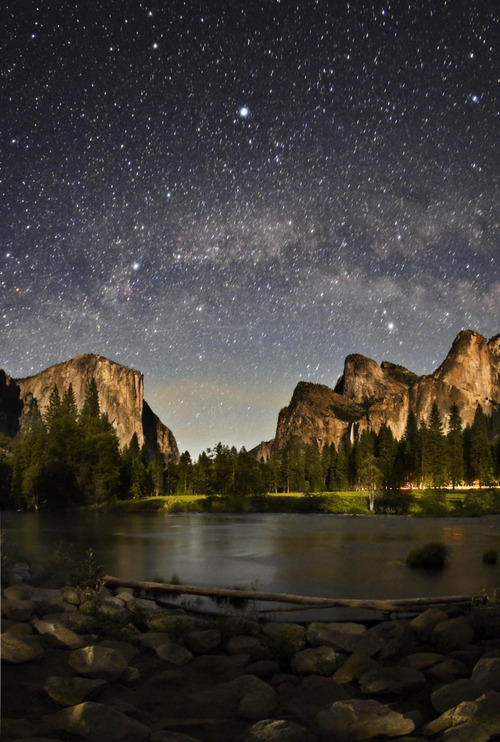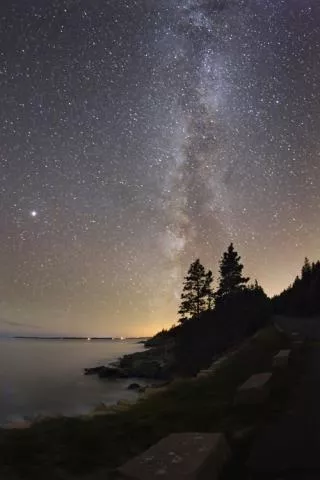Go for the Sun, Stay for the Stars
Professor, astronomer, photographer and dark sky advocate Tyler Nordgren as well as discussing next year’s total solar eclipse, will show his stunning photography of the night sky over some of the most beautiful landscapes of America’s national parks. The meeting starts at 7:30 pm at the San Bernardino County Museum, 2024 Orange Tree Lane, Redlands.
 On August 21, 2017, for the first time in almost a hundred years, a total solar eclipse will sweep across the United States from sea to shining sea. Every man, woman, and child in America will get to see at least a partial solar eclipse as will every national park and monument.
On August 21, 2017, for the first time in almost a hundred years, a total solar eclipse will sweep across the United States from sea to shining sea. Every man, woman, and child in America will get to see at least a partial solar eclipse as will every national park and monument.
“While this ‘once in a lifetime’ event will happen during the middle of the day and dark skies will not be necessary, those who do travel to one of America’s scenic wilderness areas will get a second treat on the nights around the eclipse when they see the summer Milky Way arch overhead from the darkest skies in America. From starry skies to next year's total solar eclipse, the national parks offer the premier location to see the beauty of the natural world on Earth and above it. Come for the Sun, but stay for the stars,” Dr. Nordgren said.
Tyler Nordgren is a Full Professor of Physics and Astronomy at the University of Redlands. While earning his PhD in astronomy at Cornell University, Dr. Nordgren has used modern observatories around the world as part of his research. Dr. Nordgren has written peer-reviewed articles on subjects ranging from dark matter in galaxies to the pulsation of stars that are the foundation of our understanding of the size and age of the Universe.
 In 2004 and 2012, NASA’s rovers Spirit, Opportunity and Curiosity landed on Mars carrying sundials, or “MarsDials” on board which Dr. Nordgren helped design with a team of seven other scientists and artists.
In 2004 and 2012, NASA’s rovers Spirit, Opportunity and Curiosity landed on Mars carrying sundials, or “MarsDials” on board which Dr. Nordgren helped design with a team of seven other scientists and artists.
In modern times, the steady spread of urban lighting that shines up into the sky has obscured the stars and shrunk the universe observable to the vast majority of people on Earth. Since 2005, Dr. Nordgren has worked with the U.S. National Park Service to promote astronomy education in U.S. national parks where the public still has a chance to see a natural nocturnal landscape that includes an unobstructed view of the Universe beyond our own atmosphere.
Dr. Nordgren has helped document this vanishing landscape with award-winning night sky photography that has been on display in galleries from New York City to Flagstaff, Arizona and is on display in a number of national parks. In addition, Dr. Nordgren has also developed a popular poster campaign in conjunction with the National Park Service to “see the Milky Way” in America’s parks where “half the park is after dark.”
In 2010 his book Stars Above, Earth Below: A Guide to Astronomy in the National Parks spread the message of the importance of protecting the night sky. This interdisciplinary look at the intersection of the night sky, geology, art, history, exploration and environmental conservation and America’s national parks was funded by The Planetary Society, the non-profit space advocacy organization founded by the late Carl Sagan.
In 2011 Dr. Nordgren was elected to the Board of Directors of the International Dark-Sky Association (IDA) the premier organization dedicated to protecting and preserving dark starry skies around the world. Dr. Nordgren now regularly tours the national parks giving talks to visitors and rangers alike educating both on the beauty of the night sky and how our national parks open a window on the Universe beyond.
